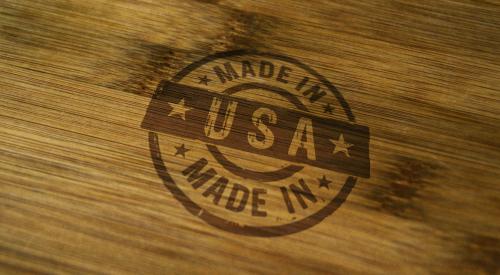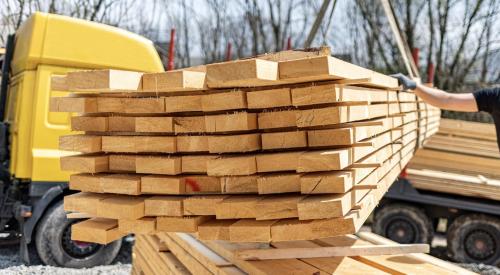After attending several building industry events so far this year, the consistent message heard from building materials suppliers, manufacturers, and home builders is: “I’ve never made more money … and had less fun.”
More than two years have passed since the COVID-19 pandemic halted economies, yet builders are still struggling to acquire the materials needed to build at the pace consumers demand.
Supply chain strain has created a ripple effect of pain points felt at every level in our industry, but I believe the keys to supply chain mitigation are right in front of us and that, as an industry, we can solve historic problems and improve the supply chain forever.
Ways to Improve the Supply Chain: Look at Last-Mile Logistics
For decades, home builders have been focused on improving jobsite readiness to reduce the number of dry runs (when a subcontractor shows up to a job that isn’t ready for them). With an unending opportunity of work currently drowning builders, scheduling a construction job has arguably become harder now than ever before.
Distribution capacity and trucking capacity also weigh on builders. Raw material dealers have suggested there aren’t enough warehouse workers or truckers, and every company is trying to fill open positions.
RELATED
- 7 Steps to Building Homes Faster and Reducing Cycle Time
- Precut Framing Field Test: Does This Off-Site Solution Earn Its Keep?
- Roll Up Your Sleeves and Get Serious About Cycle Time
At the same time, last-mile logistics are proving particularly costly to builders, a truth proven easily with simple math. Dealers report that 25% of their deliveries are wasted because they arrive on builder jobsites when the jobs aren’t ready for the deliveries. That equates to eight deliveries per home. Multiply those eight wasted deliveries by 1.2 million homes each year and the result is 9.6 million wasted trips! The associated cost of wasted deliveries also is a factor worth noting. At $300 per delivery, the expense (or savings) is $2.9 billion.
One solution to help mitigate supply chain strain is to focus on fewer tire tracks. When we reduce the number of delivery trucks, we reduce the cost of materials.
Ways to Improve the Supply Chain: Invest in Kitting
Materials that are “ready-to-install” (assembled kits) have been used on occasion by home builders since house kits were sold to soldiers returning from World War II. Today, roof trusses, floor trusses, and wall panels are a type of kitting. Kits eliminate the guesswork for installers already beset by worries about whether enough materials are on site (or on the truck) to complete the job without another trip to a supplier—adding wasted time, fuel expense, and more tire tracks and resulting in lost productivity.
Several items are needed on a jobsite at specific points in the timeline. Door hardware, light fixtures, rough electrical, finish electrical, HVAC ducts, and finish plumbing all work well for kitting. And once scheduled for delivery, scheduling trades to install them is made easier and has a multiplying impact on productivity and the job timeline.
After building several homes this way, I discovered kitting resulted in a noticeable increase in the production capacity of my installers and reduced construction cycle time. By connecting with both product manufacturers and distributors, builders may be able to coordinate off-site kit assembly and delivery, which is advantageous for both the bottom line and productivity.
Ways to Improve the Supply Chain: Shift Transactions Into Interactions
Why do hot dog manufacturers package 10 hot dogs in a pack, yet hot dog bun bakers package just eight buns? Would you agree that through collaboration, both manufacturers could deliver to the consumer an equal number of dogs to buns, resulting in greater benefit for all?
Each link in our supply chain is engaged in a polite game of tug-of-war spurred by the cyclical nature of home building. Maximizing profit is the goal of every player within the chain, but the opponent is, and will always be, uncertainty. I propose that the more uncertainty we can remove from supplier relationships, the lower our costs will be.
My most efficient supplier relationships were built using a contracting method of “shared risk/shared reward.” I would meet with suppliers (subcontractors or building supply dealers) and establish the minimum required for them to stay in business, typically about 15% of sales. I would then reveal my break-even point to align our businesses for times when my sales (and theirs) were slow. We also agreed on markup milestones for when sales were strong and my profits rose.
In revealing these finer details, our relationship shifted from simply contractual to a true partnership, transitioning financial transactions into more personal interactions. By aligning the business strategies of both the builder and material supplier, what was competition became coordination, reducing the cost per house, increasing labor and material capacity, shortening construction cycle time, and enabling our industry to start more homes.
A necessity for all businesses in this post-pandemic era has been greater focus on best practices and improvements. The need for collaboration to increase efficiency has never been stronger. Long-term changes and a shift toward evolving best practices is required. Mitigating supply chain issues in the short term (and beyond) requires analyzing build plans because within those plans are the answers. Our job is to stop long enough to see them and to take action.
 Ken Pinto is the author of How Much Is the Milk? a road map for business leaders looking to solve supply chain issues, and is the founder of Kenzai USA, an international supply chain solutions company. He is a 21-year veteran of the commercial construction industry, and has more than 40 years of building industry experience.
Ken Pinto is the author of How Much Is the Milk? a road map for business leaders looking to solve supply chain issues, and is the founder of Kenzai USA, an international supply chain solutions company. He is a 21-year veteran of the commercial construction industry, and has more than 40 years of building industry experience.













